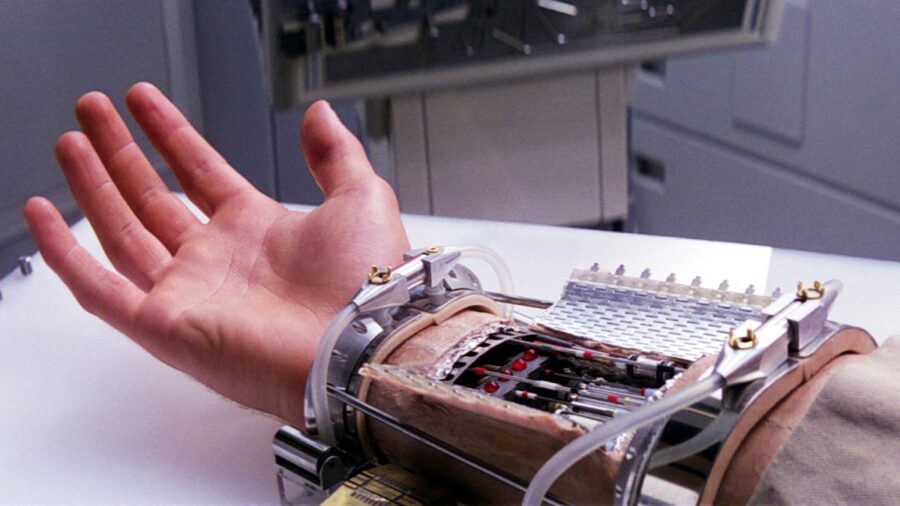The Science Fiction Concepts That Became Real Inventions

Human technology isn’t as far removed from science fiction as we might think. Although many of the concepts that science fiction works imagine aren’t real, there are quite a few modern inventions that the genre has inspired. From cell phones to automatic sliding doors, science fiction inventions are more of a predictor of reality than a departure from it.
1. Star Trek And The Jetsons – 3D Printed Food

TV shows like The Jetsons and Star Trek introduced the idea of automatic food production via the programmable Foodarackacycle and the replicator. While these science fiction inventions seemed outside the realm of possibility when they were first introduced, 3D-printed food is now a real technology that’s developing new abilities to create food from a programmable device. This technology was invented in the realm of fiction and became a real invention for making food automatically.
2. Star Wars – Bionic Limbs

Star Wars introduced the idea of bionic limbs to popular culture after Luke got his arm chopped off by Darth Vader in Star Wars Episode 5: The Empire Strikes Back. Luke’s replacement hand is a computer-controlled limb that interfaces with his nervous system, a science fiction invention that sounds a lot like a bionic limb. Bionic limbs have been an emerging technology for the past decade or so, allowing people who have lost a limb to have a functional replacement.
3. Blade Runner – Digital Billboards

Big, animated advertisements seem run-of-the-mill these days, but the technology to create one is relatively new. When Blade Runner introduced this concept in 1982, it was still very much a science fiction invention, even though we’re bombarded with digital billboards on a regular basis now, from highways to airports. Digital billboards that are motion-activated and cater to a specific interaction are now live in various places all over the world.
4. The Jetsons – Moving Walkways

The Jetsons had moving walkways that took people from place to place efficiently, but even though this wasn’t really a science fiction invention, having been introduced at the World’s Fair in 1900, the technology wasn’t put to general use until 1958, when they were introduced in Airports.
Various other science fiction depictions of moving walkways have appeared in science fiction, from H.G. Wells’ When the Sleeper Wakes to Robert A. Heinlen’s The Roads Must Roll, although in these imaginations, the moving walkways are massive transportation systems instead of a slightly faster form of ambulation.
5. Dick Tracy – Cell Phones/Smartwatch

Star Trek: The Original Series is often credited with having invented cell phones, with their flip communicators, although the Dick Tracy comic strip had a two-way wrist-worn TV communicator in 1946. The cell phone as we use it now evolved from the telephone as well as the two-way radio of the past. This science fiction invention has been a part of real-life technology since 1978 but became wildly popular in the 1990s.
Some could even say that Dick Tracy was the inspiration behind the smartwatch.
6. Star Trek – Sliding Doors

One of Star Trek’s earliest contributions to real-world innovation was the automatic sliding door like the ones at the supermarket. The sliding doors in Star Trek were the science fiction invention responsible for the practical ones we have now, that operate using a pressure sensor mat that signals a door when someone steps on it. While the first sliding doors were invented in 1954 and introduced to the market in 1960, Star Trek popularized the technology, causing it to spread quickly in the late 1960’s.












